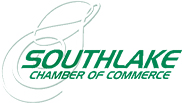A wide range of options exist for the treatment of Chronic Venous Insufficiency (CVI). Once a thorough physical examination and ultrasound study diagnoses you with CVI, your vein specialist can speak with you to determine the most appropriate approach for you.
This may be as simple as managing the condition with non-operative conservative measures in less advanced presentations.
A FEW KEY THINGS YOU SHOULD KNOW
Not every case of CVI requires surgical treatment. In some cases, conservative measures are enough to provide you symptomatic relief and slow down the progression of your venous insufficiency. Examples of conservative measures include leg elevation, regular, low-impact exercise like walking, weight loss and compression stocking use. Most insurance companies require patients with CVI to attempt to manage their condition with a trial of conservative measures before they will pay for more definitive treatments. Sometimes, in more severe cases, that requirement is not necessary. If a patient is able to get significant relief of their signs and symptoms just using conservative measures, more aggressive treatments may not be necessary.
During Radiofrequency Ablation (“RFA”), a small tube is placed into the vein to be treated. After the patient’s leg is numbed so the patient doesn’t feel anything, the tip of that tube heats up. This applies intense, focused heat to the inside of the vein, damaging it and causing it to shut down. After the procedure, the patient wears a compression stocking to ensure that the vein stays sealed during the healing process. This process is very similar to the EVLT procedure. Both RFA and EVLT are considered “thermal ablation procedures”, where the veins are treated using thermal energy. In some patients, RFA is more appropriate than EVLT. For this reason, it is important for a vein specialist to be able to offer both modalities.
During Endovenous Laser Treatment (“EVLT”), a laser fiber is placed into the vein to be treated. After the patient’s leg is numbed so the patient doesn’t feel anything, the laser fiber is activated. Intense, focused heat is applied to the inside of the vein, damaging it and causing it to shut down. After the procedure, the patient wears a compression stocking to ensure that the vein stays sealed during the healing process. This process is very similar to the RFA procedure. Both EVLT and RFA are considered “thermal ablation procedures”, where the veins are treated using thermal energy. In some patients, EVLT is more appropriate than RFA. For this reason, it is important for a vein specialist to be able to offer both modalities.
The VenaSeal Closure system is a great option to treat CVI in patients who want to have as few needle sticks as possible and who are unable or not willing to wear compression stockings after procedures. During this procedure, sterile medical grade super glue is used to seal the bad veins. By the time the patient leaves the office, the treated vein is already sealed, and the patient does not need to wear a compression stocking afterward. VenaSeal is considered a Non-Thermal, Non-Tumescent (NTNT) treatment option. Non-Thermal means that no heat is applied to the vein. Non-Tumescent means that, because there is no heat, the area around the treated vein does not need to be anesthetized. As a result, NTNT procedures tend to require fewer needle sticks.
Polidocanol Endovenous Microfoam (PEM), is better known by the brand name “Varithena”. PEM/Varithena is a medicine which is injected into the target veins, under ultrasound guidance. Once in the vein, the medicine will damage the lining of the vein, eventually shutting it down. After the procedure, compression is placed over the treated vessel to maximize the results of the procedure. PEM/Varithena is considered a Non-Thermal, Non-Tumescent (NTNT) treatment option. Non-Thermal means that no heat is applied to the vein. Non-Tumescent means that, because there is no heat, the area around the treated vein does not need to be anesthetized. As a result, NTNT procedures tend to require fewer needle sticks.
Ultrasound Guided Foam Sclerotherapy (USGS) is a procedure used to treat insufficient veins which are too small or too close to the skin to be treated with a thermal ablation procedure. During USGS, a foamed medicine is injected into the target veins under ultrasound guidance. After the procedure, the patient wears a compression stocking to maximize the results of the procedure.
In many cases, prominent varicose veins fade away and disappear after treatment of the deeper venous issues. However, that is not always the case. Sometimes varicose veins do require direct treatment in the form of Ambulatory Microphlebectomy. During an Ambulatory Microphlebectomy procedure, tiny incisions are made into the skin, and varicose veins are removed through those incisions.
After any deeper venous issues have been identified and addressed, the remaining surface spider veins can be treated with Cosmetic Sclerotherapy. During a cosmetic sclerotherapy appointment, spider veins are injected with a medicine, which closes the veins down. Most insurance plans do not cover cosmetic sclerotherapy appointments.
Diosmin is a supplement that is made up of approximately 140 ground up orange peels. Its role is to decrease inflammation around the arteries, veins, and lymphatic vessels to promote maintenance of the lining of these vessels (the glycocalyx). This supplement can decrease CVI symptoms and even improve the appearance of skin changes that can occur on the lower portion of the leg.
In most cases, health insurance and Medicare will cover treatment of vein procedures, assuming the patient meets the criteria for treatment. Out of pocket expense depends on many factors, such as deductible met and the specifics of the individual plan. Our staff will work with you to understand the benefits and coverage provided by your insurance as well as any requirements that will need to be met.






















